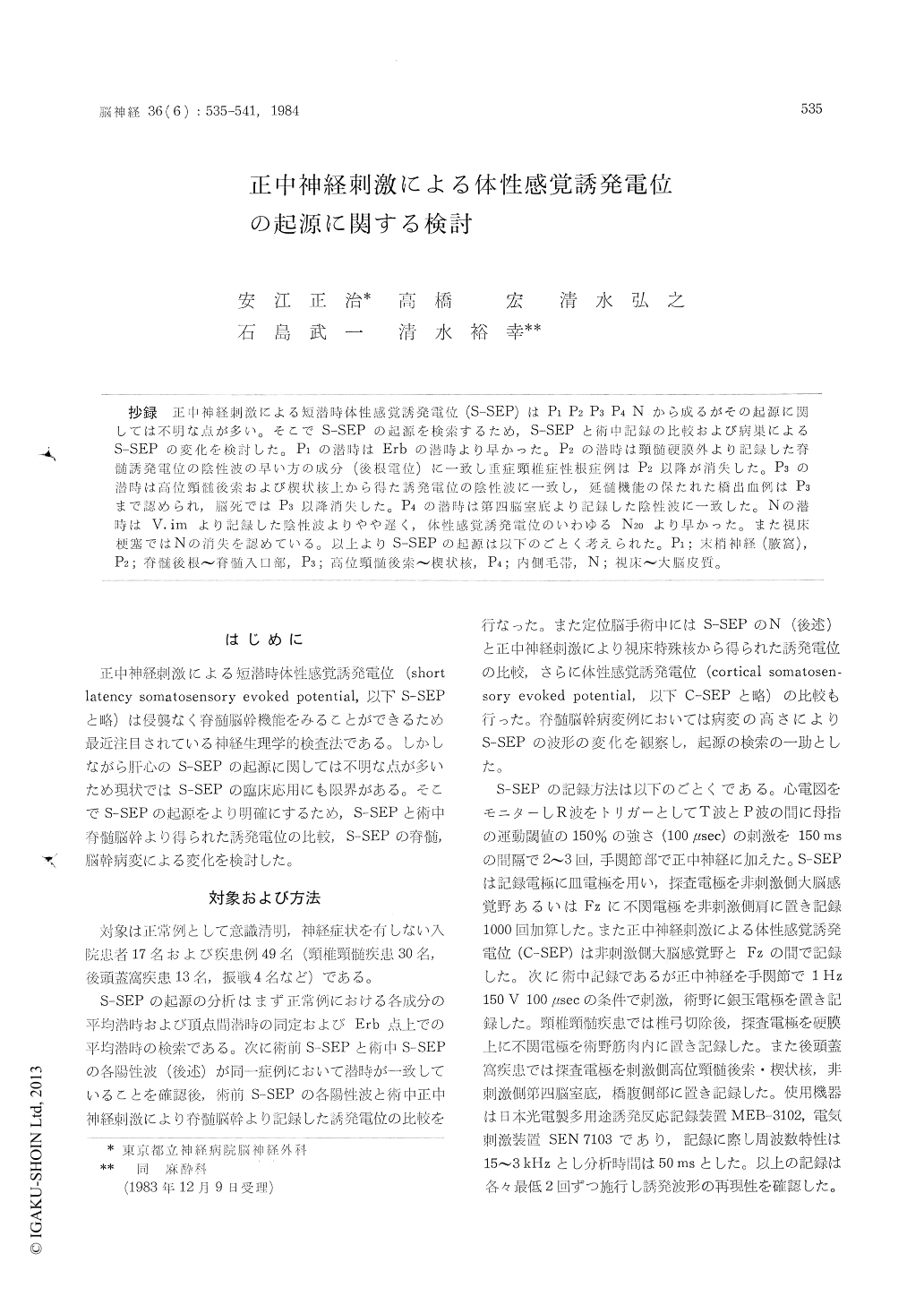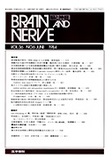Japanese
English
- 有料閲覧
- Abstract 文献概要
- 1ページ目 Look Inside
抄録 正中神経刺激による短潜時体性感覚誘発電位(S-SEP)はP1 P2 P3 P4 N から成るがその起源に関しては不明な点が多い。そこでS-SEPの起源を検索するため,S-SEPと術中記録の比較および病巣によるS-SEPの変化を検討した。P1の潜時はErbの潜時より早かった。P2の潜時は頸髄硬膜外より記録した脊髄誘発電位の陰性波の早い方の成分(後根電位)に一致し重症頸椎症性刺根症例はP2以降が消失した。P3の潜時は高位頸髄後索および楔状核上から得た誘発電位の陰性波に一致し,延髄機能の保たれた橋出血例はP3まで認められ,脳死ではP3以降消失した。P4の潜時は第四脳室底より記録した陰性波に一致した。Nの潜時はV.imより記録した陰性波よりやや遅く,体性感覚誘発電位のいわゆるN20より早かった。また視床梗塞ではNの消失を認めている。以上よりS-SEPの起源は以下のごとく考えられた。P1;末梢神経(腋窩),P2;脊髄後根〜脊髄入口部,P3;高位頸髄後索〜楔状核,P4;内側毛帯,N;視床〜大脳皮質。
Short latency somatosensory evoked potentials (S-SEP) to median nerve stimulation recorded from scalp-shoulder derivation consisted of four positivities (P1, P2, P3 and P4) and one nega-tivity (N). There is still, however, significant controversy regarding the generators of these peaks. The purpose of the present study is toattempt to solve some of the controversies by comparing the potentials recorded on surface montages with intrasurgical tracing obtained while monitering evoked potentials. This is complement-ed by analysis of S-SEP in patients with disor-ders of the cervical cord, brain stem or thalamus. Average latency of each component in normal subjects (N=17) was as follows; P1:7.6±0.6ms P2:9.6±0.7ms, P3:11.8±0.8ms, P4:12.9±0.5 ms, N:17.7±0.8ms. The peak latency of P1 was always shorter than that of negativity recorded over the Erb's point following the median nerve stimulation. The peak latency of P2 corresponded to that of the earliest negativity of spinal evoked potential, recorded from the epidural dorsal sur-face of the lower cervical cord during the ope-ration, which was considered as the potential of afferent volley at the posterior root or spinal entry portion. In a case with severe spondylotic radiculopathy, P2 and following components were abolished. The peak latency of P3 corresponded to that of negative potential recorded over the high cervical dorsal column or cuneate nucleus. In a patient with pontine hematoma but with preservation of the function of the medulla oblon-gata, P1, P2, and P3 were recorded, however, the component following P4 and N were abolished. On the other hand, a case of brain death without the function of medulla oblongata, only P1 and P2 were recorded and the components following P3 were disappeared. The peak latency of P4 coincided with that of negative potential recorded from the floor of the fourth ventricle. The peak latency of N was longer than the negative poten-tial recorded from V. im but shorter than that of so-called N20 of cortical SEP to the median nerve stimulation. A case with thalamic infarction N wave disappeared completely. In conclusion from the results as obtained above, the generators of S-SEPs are proposed as follows; P1; peripheral nerve distal to the arm plexus, P2; the posterior root or spinal entry portion, P3; high cervical dorsal column or the cuneate nucleus, P4; the medial lemniscus, N; thalamus~cortex.

Copyright © 1984, Igaku-Shoin Ltd. All rights reserved.


